It has been a hobby for me to create AI arts in the past few days. I had good results and sometimes awful and just patches of images like an ugly collage. I had a love and hate relationship with AI. Mostly in awe of what illustration I produced from my prompt and AI generator. A few days ago, I wrote After the Apocalypse, where I hypothesized that AI builds a future from the past output. The discussion was interesting in that I wanted to replicate the result. Unfortunately, my attempt was not as successful as it was before. But I still find interesting findings in my last experiments.
Exploring Perspectives
I tried a new prompt scheme to explore in my AI arts. I vividly described in one sentence what I wanted to see in my illustrations. I often explored art styles, like concept art, watercolor, gauge, ink wash, and a lot more. I never tried perspectives before. In this new experiment, I tried to incorporate perspectives in my prompt, like a perspective or a birds' eye view. I also specified where my viewer is, like a person's view at multiple angles or a pathway going into a village. I did some successful runs while some just sewed images.
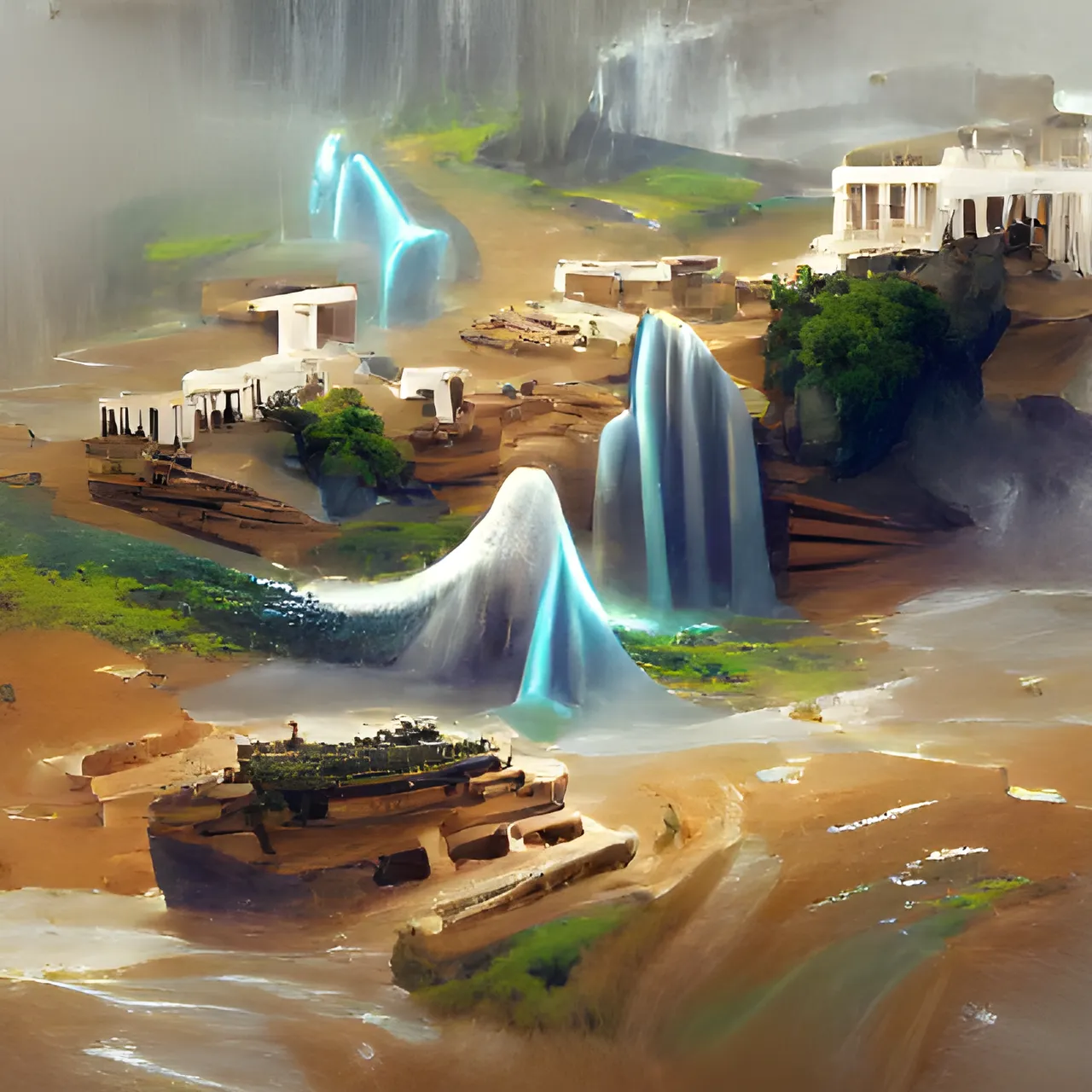 |
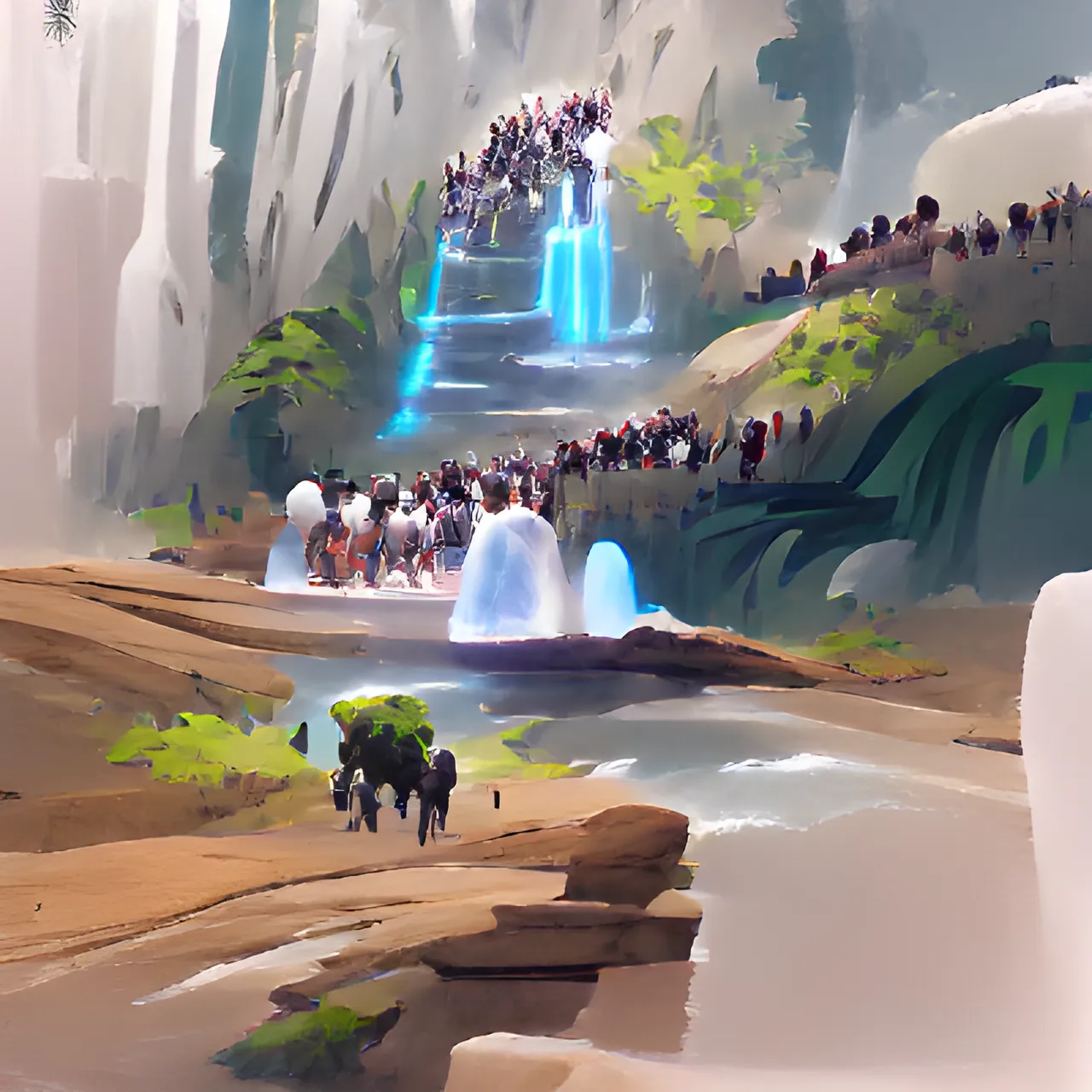 |
 |
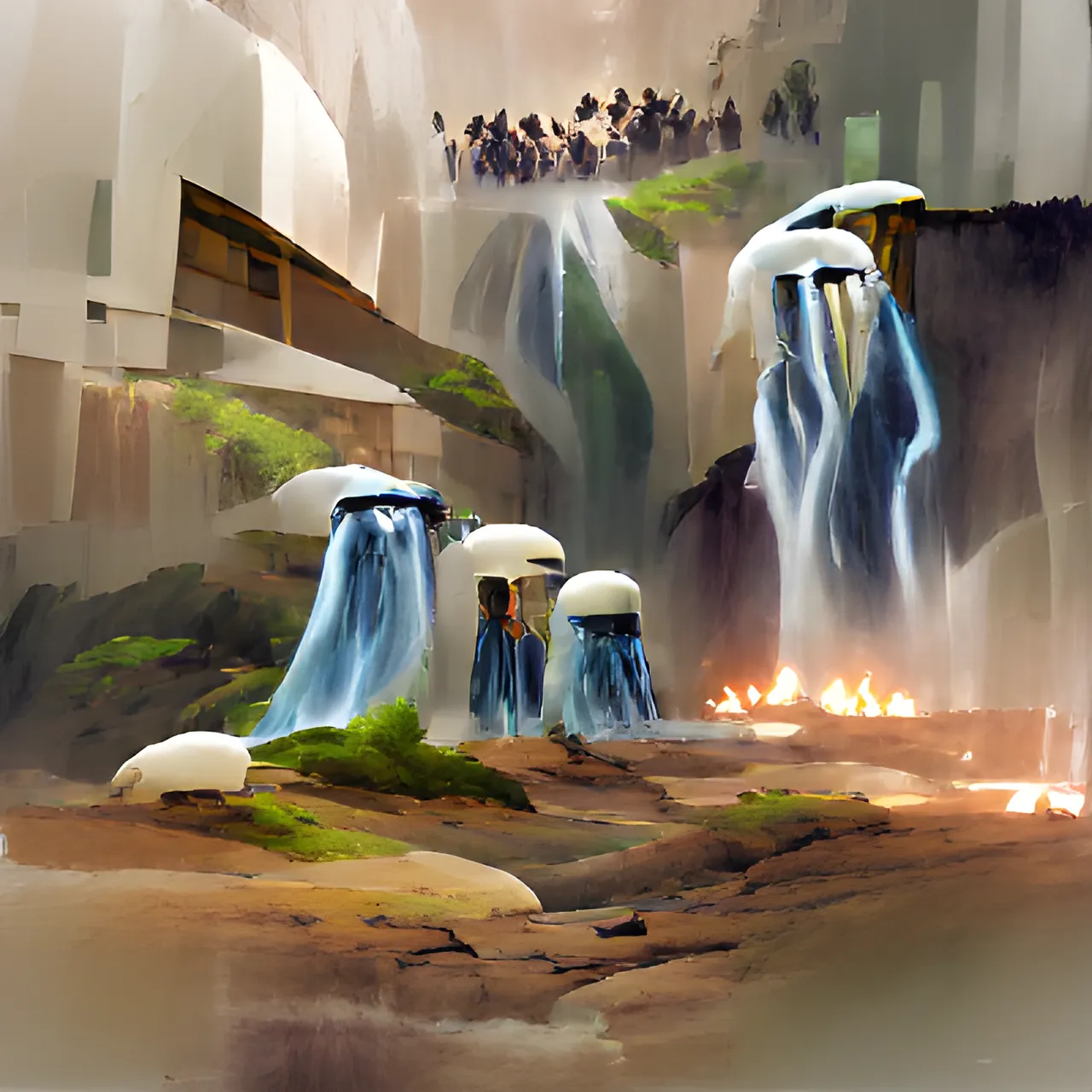 |
The illustrations above are successful results of putting in the prompt how we should view the village. I typically included looking at a far or seeing at a distance. There are results where it generates a person watching over rather than the perspective only. I think AI tried to associate the words to their meaning and conceptualized an illustration from that. I also did prompts on facing the gate or pathway to the village, and some good results, shown in Village in Waterfalls II and III. Village in the Waterfalls IV depicts a perspective looking at the back of the villages. It is interesting to see how AI portrays the back part of the village as it is seemingly an extension of what we see at the front.
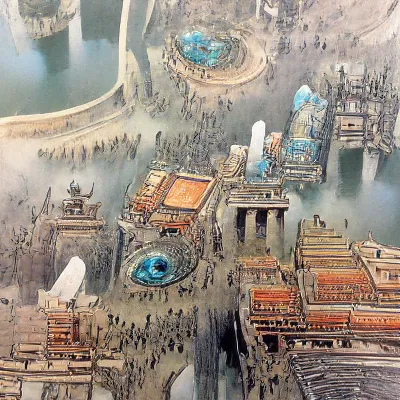 |  |
I tried bird's eye view. I was in awe of the result. It seemingly maps the village I wanted to see in my prompt, but I find no similarities in the layout of structures in my other illustrations. AI interprets the prompt differently despite the run start at the same noise (setting seed at 42). Why seed 42? No reason at all. It is just a random number I placed to start my prompt. I think with the experiment and results that I had. VQGAN+CLIP can interpret perspective when we add it in our prompt as much as it understood art styles.
Replicate and Progress
As I mentioned earlier, I was trying to replicate the result to my previous blog. Unfortunately, I can't achieve replication, and I think it is just a one-time occurrence or coincidence. But I will look into it again with the same initial noise (a seed with a positive value and the same every run). For this experiment, I want to closely monitor how VQGAN+CLIP creates art and observe any resemblance or connection that I can perceive if the notebook runs continuously without disconnection.
The experiment that I did has set control parameters. I configured seed to -1 and no initial image. I ran the same prompt about a seed that grows in an ancient cup continuously for almost 3 hours, with each round need 30 minutes, 500 iterations before starting the next. The notebook runs without disconnecting. A new image shows up every after 50 iterations, and I interrupted the iteration after reaching 500.
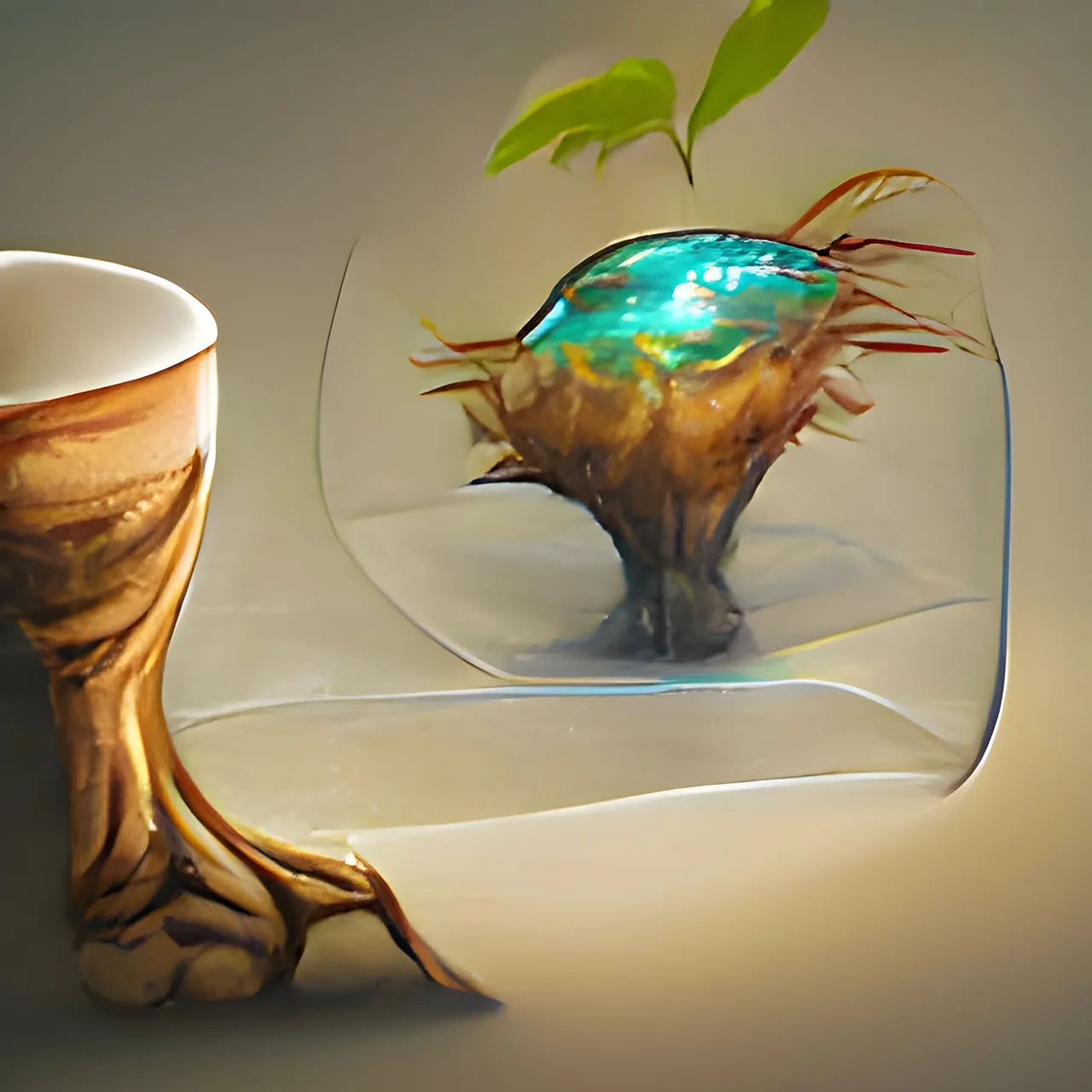 |
|---|
 | 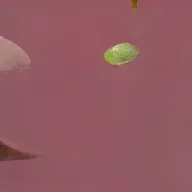 |  |  | 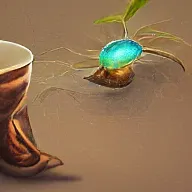 |
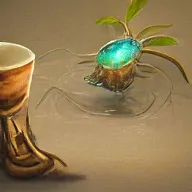 | 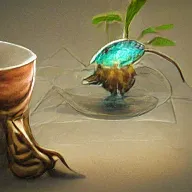 | 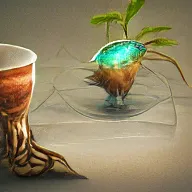 | 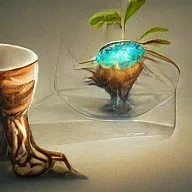 | 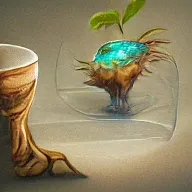 |
At the initial run, I find the illustration out of context as to the prompt. The seed was not in the cup, despite its growth. I think the output illustration is just one of those experiments I did that were seemingly a collage of images or out of context. Although I was not satisfied with the first run, I did observe events that transpired. I found out that objects or elements in our illustration concentrated on the darker tone in the zeroth iterations. It was all true in all runs, as shown.
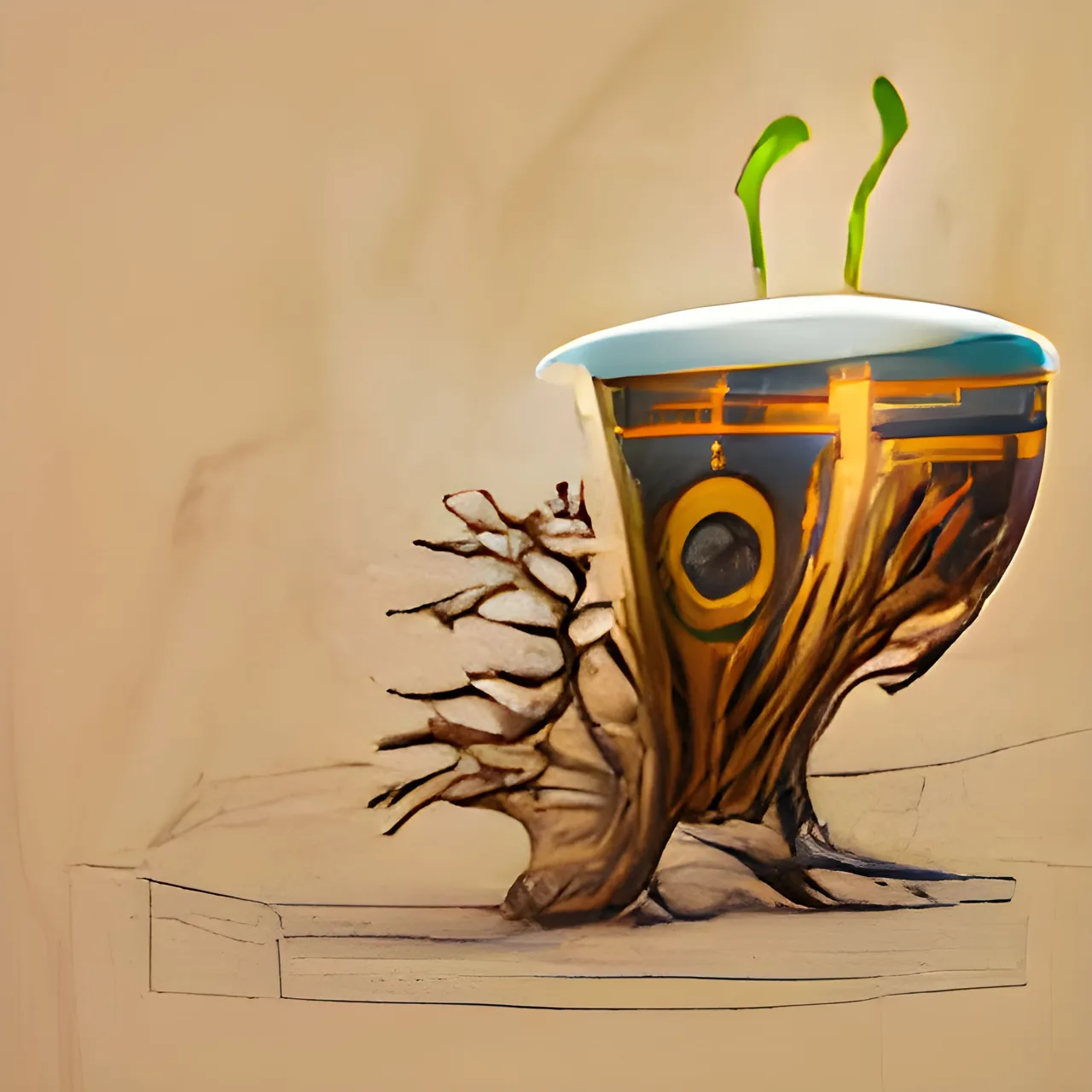 |
|---|
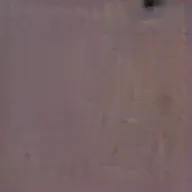 | 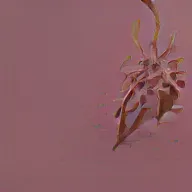 | 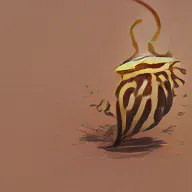 |  | 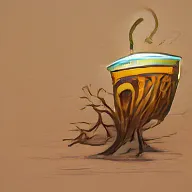 |
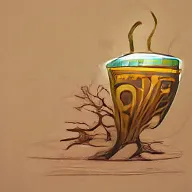 |  |  | 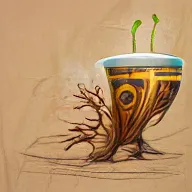 | 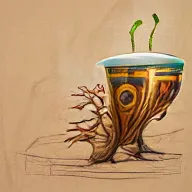 |
The second run was a success. It depicted a seed growing in the cup, but I still find the illustration lacking in artistic elements and seems unfinished. The iterated images change from the same starting tone and converge to slightly related color tones. What I find interesting is how the image progresses from the zeroth to the 500th iteration. The illustration above seemingly grows leaves as it reaches a higher iteration number. I think the higher the iteration can make our AI art better. It also became cohesive to the context of our prompt unless some weird things happened to our AI model.
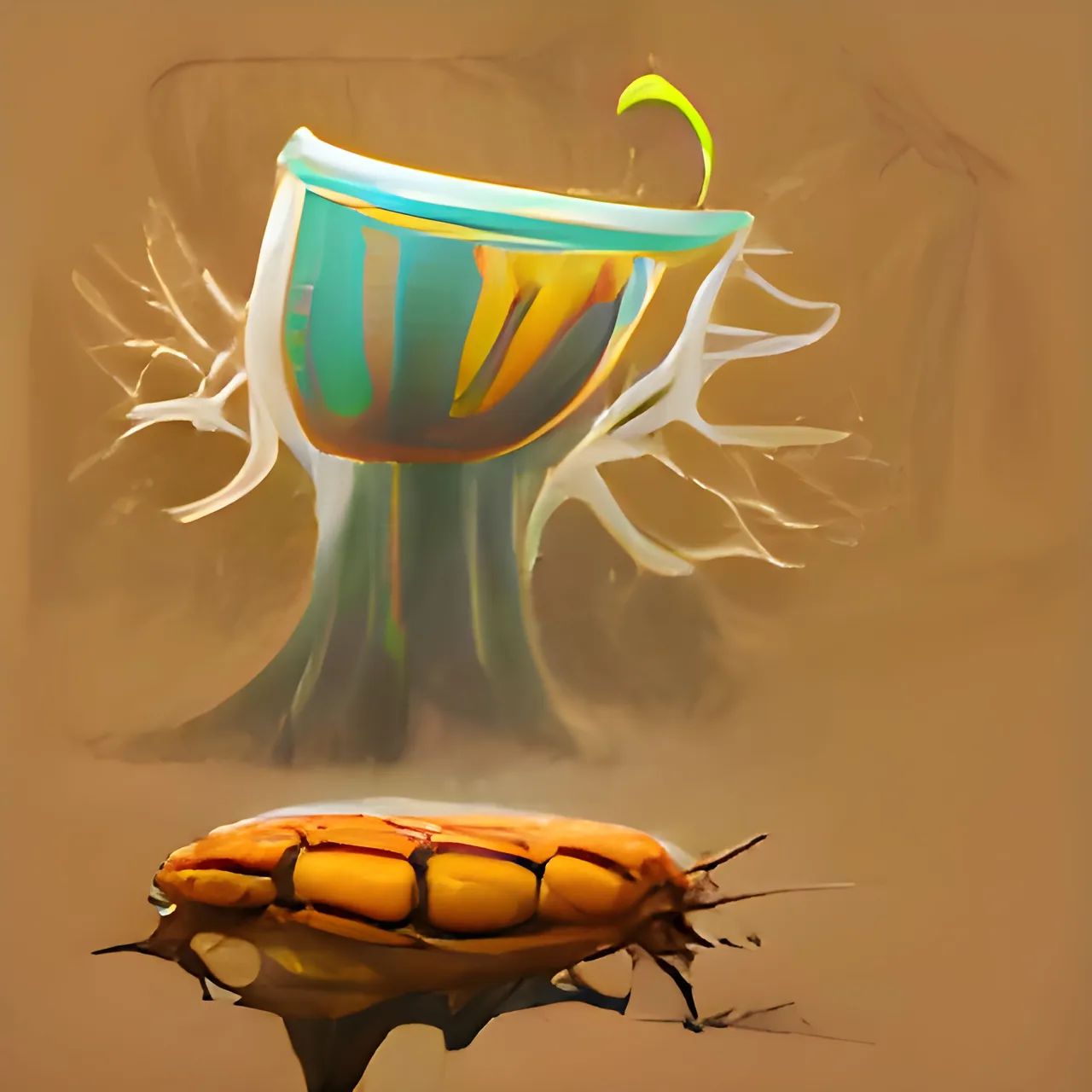 |
|---|
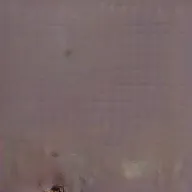 | 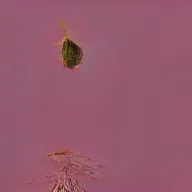 | 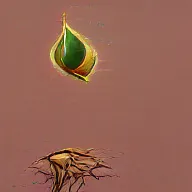 | 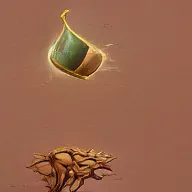 | 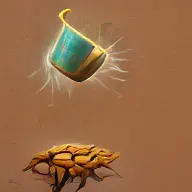 |
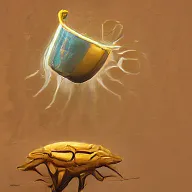 | 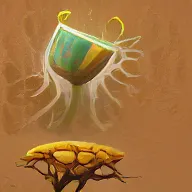 | 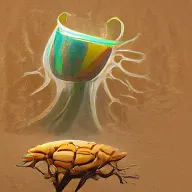 | 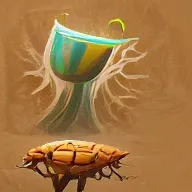 | 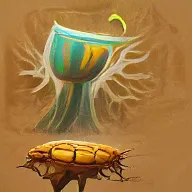 |
I don't think the third run was a success. It may have elements, but it is too abstract. The seed is outside the cup. But I am not sure what I perceived in the illustration. I presume the foreground is a seed while the far back is the cup, yet leaves growing. It is one of the results where we can't figure if we reach the prompt we envision, or it is just a close patch of images to our prompt.
Again, the AI art convergences to a better form as it reaches higher iterations. I think it is not evident in the third run. At 500 iterations, the output is blurring, and some parts are gone. I think the reason behind this is the third run needs more iteration to converge a better and cohesive illustration. I guess some artwork that takes more time than others. It is like how we create traditionally. Some need years to create masterpieces, while others can do it in no time. Maybe, it also concerns with how extravagant the output illustration is that it needs more time.
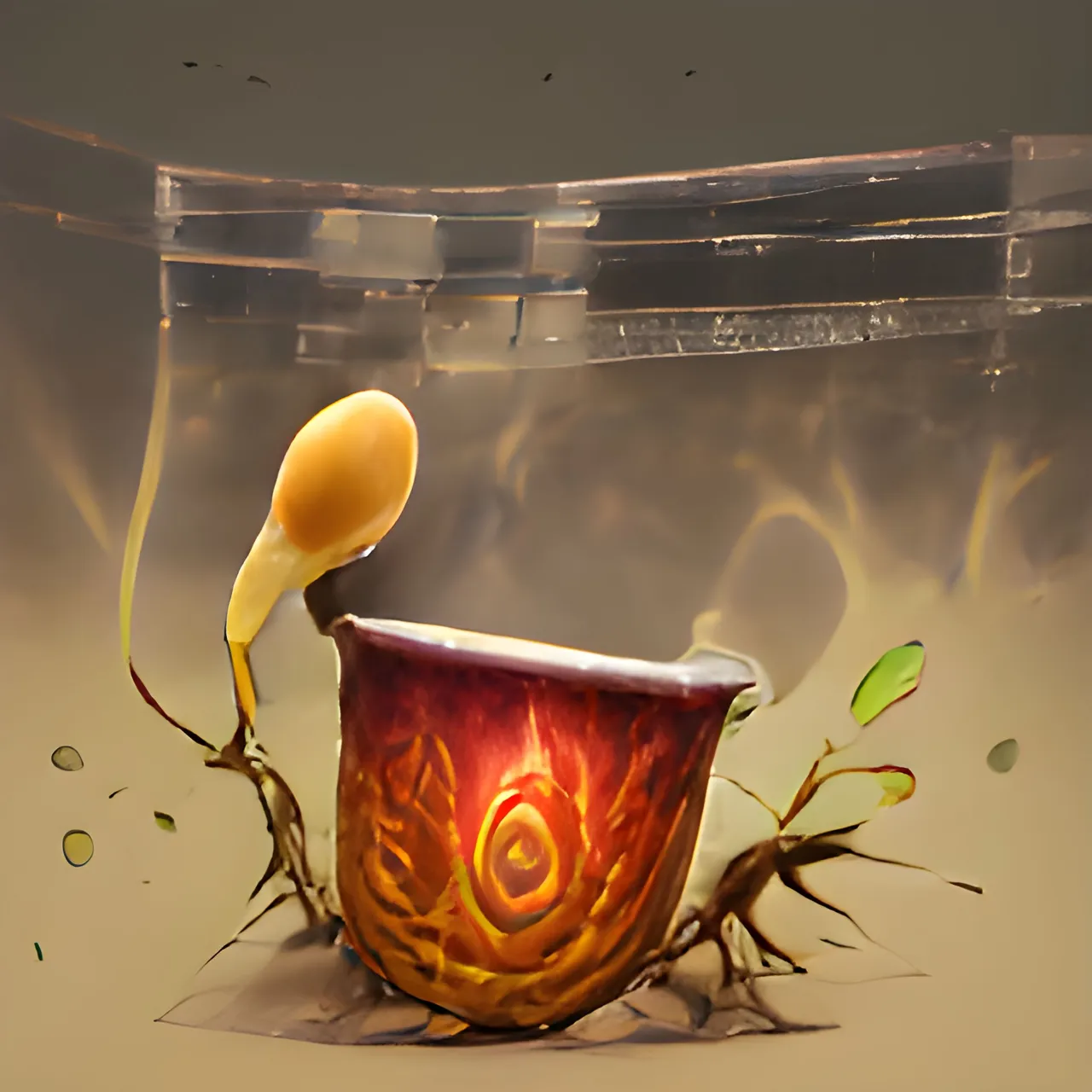 |
|---|
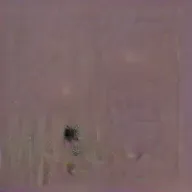 |  | 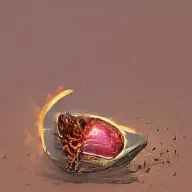 | 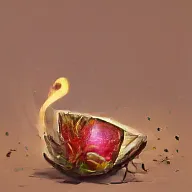 | 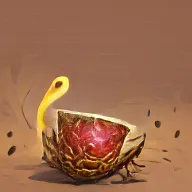 |
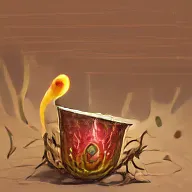 | 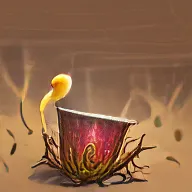 |  | 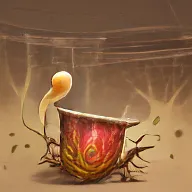 | 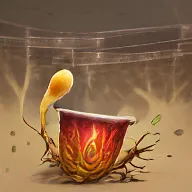 |
 | 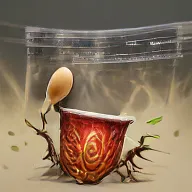 | 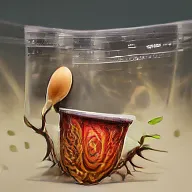 |  | 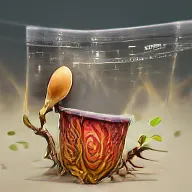 |
I think the fourth run was the best among these runs. It is somehow close to what I envision and has the elements of the prompt. When I observed the images in the iterations, I was amazed at how the cup formed as if it was from seed and slowly got the leaves and roots. The color profiles follow how the other run builds the tones.
For replicating the artwork from the same prompt, no run has close similarities with the other. I find it peculiar that each run evolves similarly. From seed and a cup, the leaves slowly grow as AI iterates the result. Figuratively, the progress tells a story of how the seeds in the cup evolve as the illustration evolves.
To sum up, what I observed, I find that AI art converges at a different time (iteration length). It seems similar to how we create art traditionally. There is artwork that we paint or sketch on the go. Some need time and even reach years to complete. Maybe, AI takes a long time or iteration when they produce masterpieces. Aside from that, I was amazed and delighted by the progress in each iteration. The iterated images tell stories by themselves. Also, I saw more elements painted by AI in the darker tones at the zeroth iteration image.
| Author's Note: |
|---|
All content including digital illustrations is from the author. The illustrations are generated by VQGAN+CLIP (Notebook 1, Notebook 2 and Nightcafe). For enhancing the resolution, color, and tone, the author used Real-ESGAN and Photoshop. |
